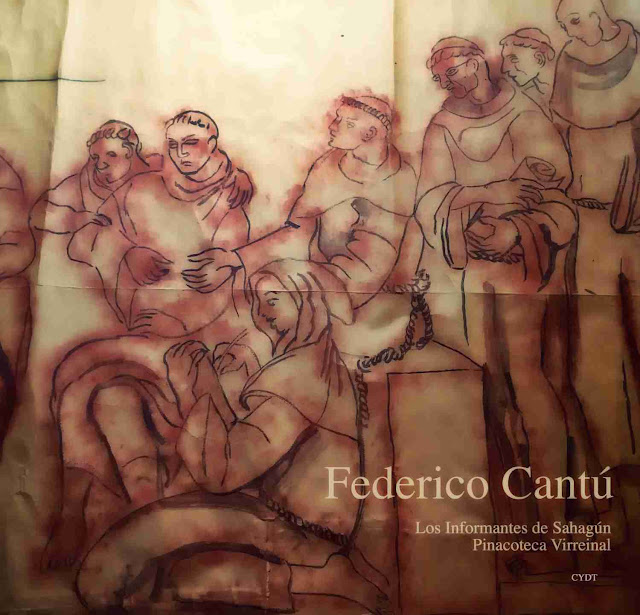Colección de Arte Cantú Y de
Teresa
Mexican Art &
Life (1938-1939)
Mexican Art & Life was an
English-language periodical published by Mexico’s Departamento Autónomo de
Prensa y Publicidad in 1938-1939. Issues cost 15 cents per issue or 50 cents
for a year’s subscription. UTSA Libraries Special Collections holds six of the
seven issues published.
Mexican Art & Life’s topical content is fairly consistent throughout its brief
history. Most issues feature a mix of travel-guide-like promotionals about
tourist destinations, articles on artistic practices or traditions, profiles of
Mexican artists, and commentaries on social or economic issues, as well as
occasional prose or fiction pieces.
The very first issue (Jan. 1938)
opens with an effusive paean to Mexico City, highlighting its Aztec history and
its many North American firsts:
Issue No. 3 (July 1938) follows up
with J. Rodolfo Lozada’s description of a trip to Yucatan, appealing to potential
tourists with lines such as, “The soul of Merida imprisons and bewitches the
wayfarer” and “Awaiting [the traveler] are the ruins of a civilization which,
until a few years ago, only interested the archaeologist but now attract poet
and philosopher alike.” Other featured sites include the Aztec ruins at
Malinalco and the Iturbide Palace (April 1938), as well as Monte Alban and San
Miguel de Allende (Oct. 1938).
Art history topics include Oaxacan
pottery (April 1938), Mexican lithographs (July 1938), Political Caricature in
Mexico (July 1938), 19th century photographic portraits (Oct. 1938), and Aztec
animal figurines (April 1939), among others. Artists profiled over the course
of the magazine include: landscape artist and portraitist Argüelles Bringas and
oil painter Francisco Gutierrez (April 1938); painter Jesus Guerrero Galvan,
wax-and-fabric modeler Luis Hidalgo, and landscapist Dr. Atl (July 1938);
landscapist Jose Maria Velasco and painter Federico Cantú (Oct. 1938); and
photographer Majuel Alvarez Bravo and painter Agustin Lazo (April 1939).
Seeming sometimes at odds with the
celebratory tone and arts & culture of the rest of the magazine are
occasional articles that explicitly address politics and economics. “The Moving
Forces in Mexican Life” (Jan. 1938) draws on a lecture delivered by Dr. Ramon
Beteta, then under-secretary of the Foreign Office” and focuses on the role of
the Mexican Revolution as a social force, its development and future.
“The Indian Problem” (Oct. 1938)
and “Mexico’s Demographic Policy” (April 1939) both make for particularly
uncomfortable reading, although they likely reflected mainstream opinion at the
time.The latter article is especially disturbing when the modern reader looks
at it through the lens of global events of 1939. Author Gilberto Loyo
devotes several paragraphs to discussing immigrants and their relative
desirability based on ethnicity or national origin. In particular, he
discourages Jewish refugees, stating that “The demographic, economic and social
characteristics of the Jews do not make them desirable for Mexico.” On the
other hand, he espouses Spanish immigration (by Spaniards fleeing the Spanish
Civil War) with the explanation that, “a crossing between the Spanish immigrant
and the predominantly indigenous half-breed may take place.”












